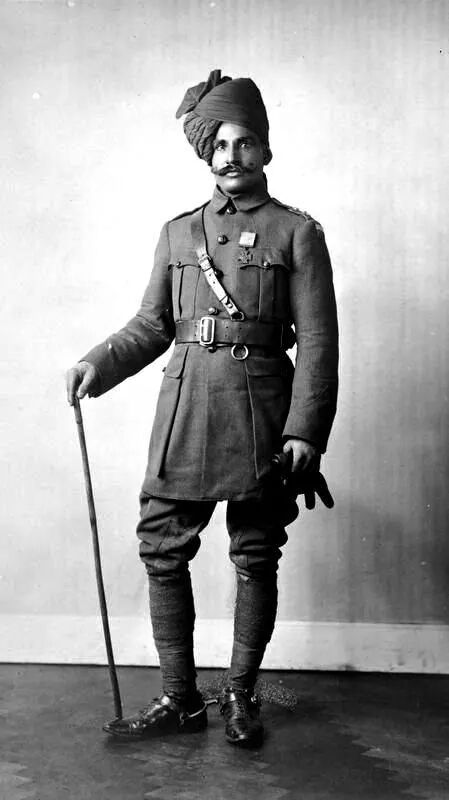Gobind Singh Rathore (1887-1942) was born in Damoi Village, Nagaur district of Rajasthan, India on the 7th December 1887. He joined the Jodphur Lancers and later became a Lance-Daffadar in the 28th Light Cavalry, with whom he embarked for France, and was later attached to 2nd Lancers (Gardner’s Horse).
On 30th November / 1 December 1917 when the 2nd Lancers was surrounded by the enemy brigade, the situation became very tense because the headquarters was about six miles from Épehy-France.
At this time volunteers were called for to carry a message giving the position of the regiment to the headquarters on the outskirts of Piezeire. Singh and Sowar Jot Ram were selected and given two different routes. Both of them started immediately on a gallop. Jot Ram was killed as he tried to make his way to the destination.Singh was given the open more difficult route which was under constant enemy fire. He had traveled about half a mile of the lower ground when his horse was killed by machine-gun fire.
For some time Singh lay still close to his horse, then judging he was no longer watched, he got up and began to run on foot. Immediately there was a burst of machine gun fire upon him. He trembled over as if shot and waited before getting up again and running. By repeating this process varied by wriggling along the ground, he reached the brigade headquarters.
A return message had now to be sent and he volunteered to take this too. He was given another horse and started back taking the high ground south of the valley until he reached the German post. Then dipping down and across the sunken road he had covered two-thirds the distance when his horse was shot and he had to make the rest of his way running and falling.
An hour later when another message had to be sent from the regiment, and although he was exhausted and wounded, Singh came forward again. He was told that he has already done his share but he insisted that he knew the ground better than anybody else. On the strength of this, the Adjutant allowed him to go. This time he started from the lower end of the road, turned right and passed ‘Catelet Copse’ and went straight through the barrage in Épehy. Halfway through Épehy, his horse was cut in half by a direct hit from a shell just behind the saddle. Singh then ran on and eventually got into the dead ground and made his way out of the sight of the enemy to Pezières. Thoroughly exhausted and badly wounded he arrived there at 11.55 AM. He volunteered to make the journey a fourth time but was not allowed to do so. For his conspicuous bravery and unwavering devotion to duty in saving his regiment and fellow men, Singh was awarded the VC.
Singh received his medal from the King on the 6th February 1918, at Buckingham Palace and following his investiture he was presented with a silver plate and a gold watch at a reception given in his honor. Those present at the reception included two officers of the Indian Cavalry who were visiting London as guests of the nation, as well as General Sir O’Moore Creagh VC, who had earned his VC in an action at Kam Dakka, on the Kabul River, in 1879 during the Afghan War and Lieut.-Gen. Maharajah Sir Pratap Singh ji.
After the war, Singh was promoted to Jemadar in the 28th Cavalry and served in the army until 1934. He passed away two days after his 55th birthday, on the 9th December 1942, at Nagaur, Rajputana, and his body was cremated in his home village of Damoi. The medal is currently displayed by his regiment 2nd Lancers (Gardner’s Horse), Indian Army.
His son Brig Ganga Singh also served with the regiment of his gallant father.



